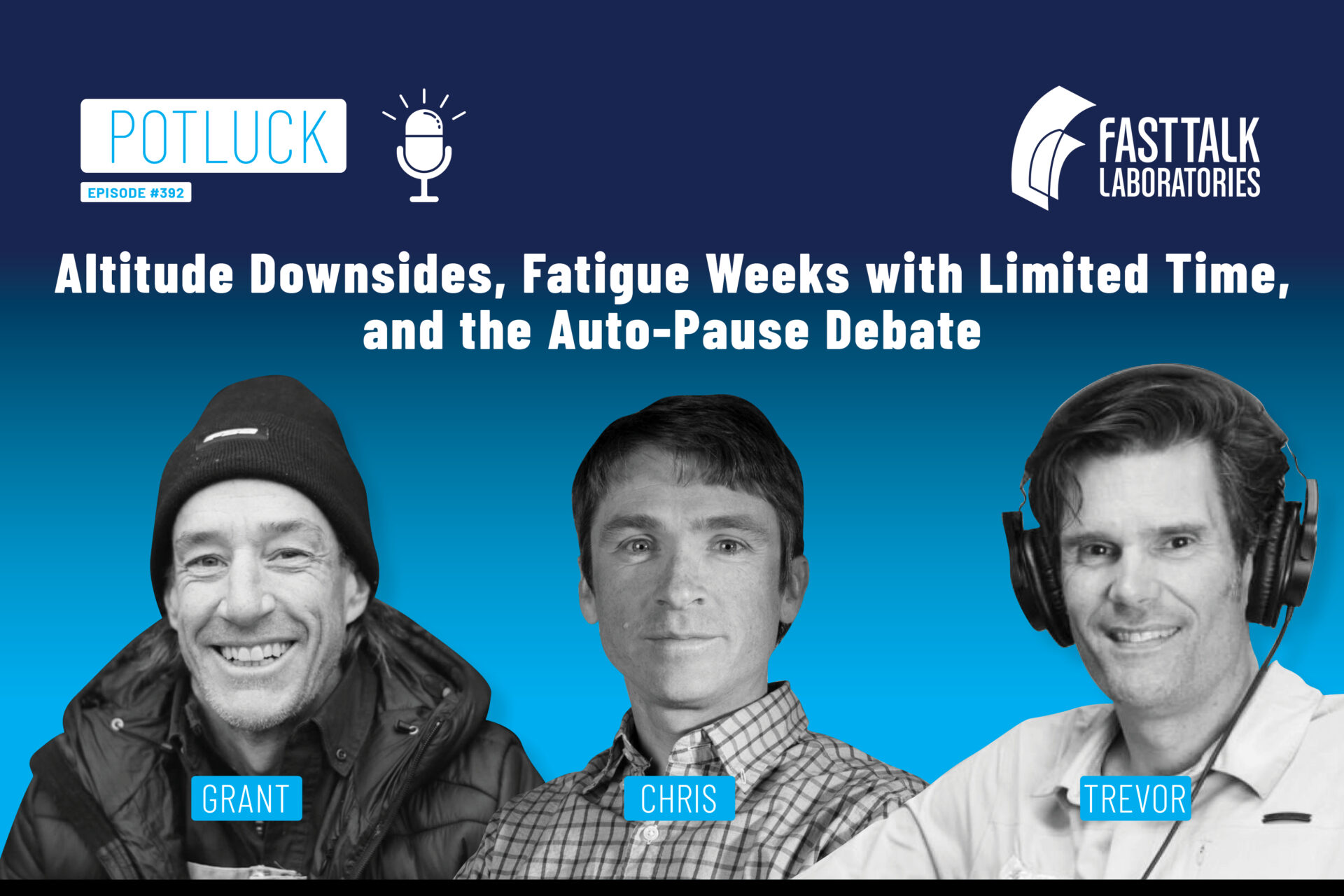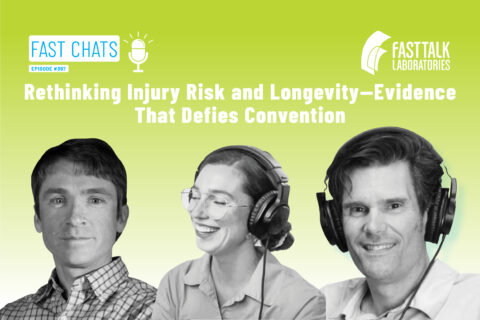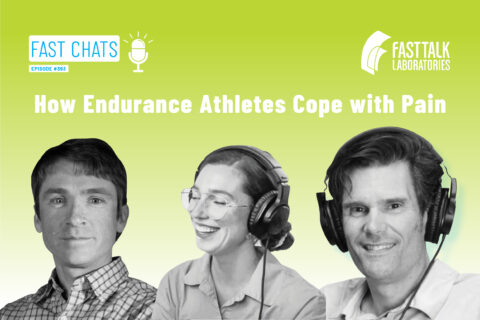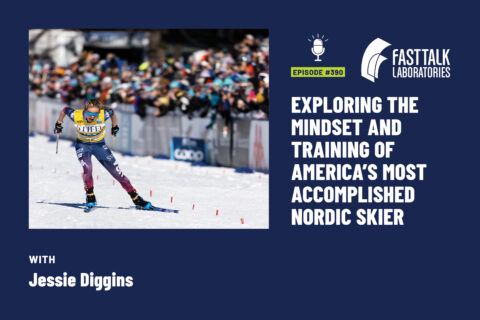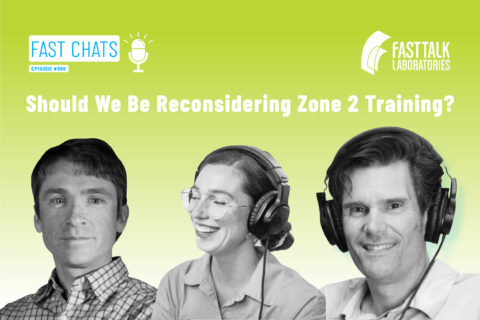In this week’s potluck episode, we discuss whether there are issues with coming down from altitude, how to do a fatigue week with limited time, and whether or not to use auto-pause.
Episode Transcript
Trevor Connor 00:00
Man, hello and welcome to another potluck. I’m not even gonna try. The intro
Grant Holicky 00:12
so lame that you don’t even try anymore. You know, as a mental strength coach, trying and failing is how we learn the fact that you won’t even try anymore means
Trevor Connor 00:23
that we’re in trouble. Trevor failing and then not trying. Oh, that’s just giving up. Okay, that’s
Chris Case 00:31
fine. That’s even worse, that’s
Grant Holicky 00:32
just giving up, man. But
Trevor Connor 00:33
let’s just talk about all the Off mic. Griffin’s car broke down. Griffin is not here today, so we don’t have I just got back
Chris Case 00:42
from Europe and from moving for two straight days, so I’m a little sore.
Trevor Connor 00:46
I literally just drove here from the airport. I got up at 4:30am East Coast time, which means 2:30am Colorado time, which means it’s the
Grant Holicky 00:54
middle of the day for you. Either way,
Chris Case 00:56
you need a snack. There we go, right. It’s not nighttime yet, Paleo cookie.
Trevor Connor 01:00
So apparently, the way to build mental toughness
Grant Holicky 01:03
is suck it up. Yeah, don’t do anything. I’m just talking. This is bad coaching. What you’re listening
Trevor Connor 01:15
it’s very good with his athletes. With me, you
Chris Case 01:18
should see him with children.
Grant Holicky 01:20
I’m good. I think I’m okay. River, my son scored his first lacrosse goal this weekend. That was really cool.
Trevor Connor 01:27
Nice. Did you tell him? Why didn’t you score two? He did score two,
Grant Holicky 01:31
actually, but I didn’t go to three. That’ll be next week. It was just so cool to watch. It was so much fun. I just kind of went with it. Excellent. So my first question, I apparently have two today. My I’m special. Just like your son had two goals, you have two questions. All right, I think his are more impressive than mine. But here’s my first question. We talk all the time about the benefits we train at altitude. We talk about how you come down from altitude. You’re flying at sea level. Everything’s great. This and that I have always felt like as a coach, there’s a little bit of a dark side of coming down from altitude to sea level. So I wanted to kind of put this to you two, and I think you’re the two perfect people to put this to, what could be the potential downsides of an athlete who’s been training at altitude or lives at altitude now going down to race at C low.
Trevor Connor 02:25
Actually, a lot go for it. Yeah, there is a ton, because research on training at altitude is highly inconsistent, and this is what I believe. It’s what I’ve read, and it makes a lot of sense to me, a those people who do adapt to altitude. There’s different ways you adapt to altitude. B some people, I’m one of them, are what are called altitude non responders. So you go up to altitude, you can’t train as hard, you don’t get the altitude benefits. You come down, you’re actually just weaker. Another thing to keep in mind, there is an acute adaptation to altitude, and then there’s the chronic adaptation. Now, chronic is what everybody’s going for. That’s when your body naturally raises EPO. Well, actually it raises EPO the whole time, but that’s when you start seeing the aerobic adaptations that you want, right the downstream effects of that EPO. But aerobic adaptations take time, so initially, what the body does is say, How am I going to deal with the fact that I can’t produce energy as much aerobically, so now I’m going to be producing more anaerobic metabolism. And how do I address that? So you actually, in the very short run, become better at buffering acid and actually dealing with acid buildup in the blood. You actually become initially a more anaerobic animal before the aerobic adaptations kick in. So this is why you have some people go to altitude for four or five days and going, Oh, now I’ll EPO it out, and I’m going to be super strong. And yeah, they might be really strong in the sprint, but their actual aerobic side, that endurance side, is hurting.
Chris Case 03:56
So as a altitude non responder, is that what you said you go back and forth from altitude back to the East Coast, for instance, if you’re back there specifically for a race, how does that change your race mentality? If you go back for a specific period of time, like a month, you’re back in Vermont or Florida or various places, do you train differently before you come back to altitude, before you answer, what percentage of people would you say are non responders or low responders? That’s a really
Trevor Connor 04:29
good question, and I don’t have an answer. Okay, so I don’t know. 23.4 Okay, we’ll go with grants. 234, 23 23.4%
Chris Case 04:38
so we’re talking to 23% of our audience, potentially right now.
Grant Holicky 04:42
Yeah, I may have pulled that out from somewhere, but we’re going with that’s a potluck. We can do that right? Sure. We’ll just go
Trevor Connor 04:51
with it. Altitude, non responder is a bit of a misnomer. We do respond. We just never fully adapt. You do adapt. A bit. So certainly, when I go down to sea level, I get that feeling of, oh my god, I’m super strong. I can go harder. The question is, can I go harder than I would have if I had just been at sea level the whole time? Part of that, oh my god, I’m so much stronger feeling that I might be having is just because I’m always weaker at altitude. As a non responder, I can never do the same power, even at Boulder’s altitude, which you talk to altitude experts, isn’t even considered high altitude, right? I can’t do the same power here. I could do before at sea level, no matter how long I’m here. One of my teammates, Chad haga, he just instantly he’d come up to altitude and he could put out the power. And I remember going up to Mount Evans with him, which is at 14,000 feet, and he’s still putting out the power at super high altitude. So that’s where you see the opposite. It just didn’t slow him down. It always slows me down. I am always putting out worse power at altitude.
Grant Holicky 05:56
So there’s two pieces to this. One is what you just said, and I think this is a phrase that I hear a lot about people coming down to sea level kind of not correct. It kind of is, but it kind of isn’t. I’m stronger at sea level. So you have some of that that you’re stronger at sea level, but some of it is that the same effort doesn’t feel as hard, right? And that’s kind of what I was getting at, right? And this becomes the crux of what I see. Can get really hard for people. You come down from altitude and you’re like, Yeah, I’m flying. Man, I’m crushing these same numbers, no effort, yeah, but you still got to go harder. We used to watch this in swimming all the time, and in running, it happens all the time, because 1972 Olympics were held in Mexico City at 7300 feet. I think it is. And all these time, adjustments came into play into USA Swimming and international running. So if you run the mile, you get an adjustment for every level you go up in altitude that knocks time officially off your time. So if you do a 200 freestyle in Boulder, it’s actually considered 1.2 seconds faster. So they take the time you go two double. O, it’s 158 eight. Now that’s your official time in the record. So I would have all these kids that would be like, Okay, I get 23 seconds in the mile, so I’m 23 seconds slower at altitude. So I should go down to sea level, and I’ll go really fast, but I always sat there and went, Wait a second, you were born up here. That’s the gold standards of altitude training. Is have the person born at altitude, because those adjustments are inborn, and they’re never going to change. There’s some physiological there
Trevor Connor 07:35
are epigenetic changes that people have if they are born and grow up at altitude, that people who grow up at sea level and come to altitude, they never develop those epigenetic changes. So somebody who is an altitude native will always be better adapted than somebody who is a transplant
Grant Holicky 07:51
trying to come up. So we’d have these kids want to go down and race at sea level. And I was always sitting there in my head going, well, when you race up here, you get 23 seconds for free. So we should do all of our race best effort miles up here, because it just knocks time off. Now you go down, you have to swim at different pace that you don’t train you have to swim at a different higher level effort that you don’t train at. And we’ve talked about a lot on this show that it’s hard to do vo two Max efforts at altitude too. So that’s my piece of it. I’m really interested to hear more from you guys. But like my piece jumps out and goes, well, we all feel really good when we go down to sea level, but sometimes it’s really hard to convince yourself to go that much harder at sea level, because that’s what you need to do to, quote, unquote, get the benefit.
Trevor Connor 08:40
Well, I’m gonna throw another side of that too. Of anybody who goes and trains at altitude and then comes down to sea level to race, be really careful, because you can go so much harder at sea level, but your legs aren’t used to it. And I’ve seen this a bunch of times, where guys come down, it’s the day before the race, and they go, look at the five minute power I can put out. And they put out their best five minute power of the year. And the next day, they wake up for the race, and their legs are destroyed because their legs are going, I haven’t gone that hard, yeah, in a long time, right?
Chris Case 09:10
And I would say that that’s my more typical experience, is getting ready for something like cyclocross nationals in the winter. I’d be living at Colorado. I’d go back to visit my parents for the holidays. This is when nationals was after Christmas break. I’d go there and I do like hill repeats on my favorite hill or something, and I would smash it over and over again. But like you said, you only got so much of that in you, and you actually end up shredding yourself a little bit. Yeah. And then the negative is, it looks good on paper, but it doesn’t set you up well for the event that might take place a week later, or something like that.
Grant Holicky 09:46
What’s really funny is I used to go down for these swim meets, right? And the kids would go down, and I’d be there, and it’d be there without a bike. So I’d go running, and I’d go running every day, and I run a little bit, but I’d do these five, six mile runs over and over and over again. Fast because you felt great. And I’d get home and my legs were so torn that I couldn’t train on the bike for like a week. And even if they weren’t sore, they were just dead, because I went super hard day in and day out.
Trevor Connor 10:13
So if you are coming down from altitude and you’re going to a race the day before the race, my biggest recommendation to you is do the most mediocre pre race workout you’ve ever done, because otherwise, you’re going to take all that great strength you can use in the race and waste it the day before. Yeah, you know, the last thing I’ll say is, this is why it gets really confusing, and in the literature you see different results, is we know that you can’t train as hard at altitude, particularly when you’re doing interval work, you just can’t do interval work as hard. So you get a bit of a loss of form from that, not be able to train as hard. But you get benefits from promoting your EPO, and all the benefits you get from EPO, like if you go down to Colorado Springs, they take the kids down there, put them in a hyperbaric chamber, basically that simulates sea level. Have them do their intervals in that and then do the rest of their training at altitude, so they get the best of both worlds. But it is always a question of, how much are you losing in the work you’re doing versus how much are you gaining from that EPO? And everybody’s gonna be different. I’m on those people power goes down a lot in the intervals. I can’t go nearly as hard as in the intervals. I don’t get much of a gain from the EPO. So for me, if I was living down at sea level to go and spend a week at altitude, I’m just gonna ruin myself. Right? Other people, like Chad, he could still go just as hard he got the EPO effects come out to altitude for him, would be a real benefit. You need to know which one you are.
Grant Holicky 11:39
It’s not as black and white and as cut and dry, I think, as we’ve made it out to be, especially in the media now, where it’s like, Whoa, he went up to altitude. He’s gonna be ready. The one thing I’ll say a lot is I will watch athletes come down from their altitude camps. Pro cyclists come down, and they’re not amazing first weekend. They kind of need a race or two under their belts to get flying, because it’s a different feel, right? You don’t feel the same way, and you got to figure out how to go hard again. So just something to kind of pay attention to. I think that’s a neat thing.
Trevor Connor 12:13
Fast talk listeners, we have exciting news. The fast talk podcast is now available on YouTube. Subscribe now for our 100 best episodes, plus upcoming video summaries of new episodes and featured content. Our episodes on YouTube have closed captioning and transcripts, all made convenient by the familiar YouTube platform. Listen and subscribe on YouTube, just search for fast talk labs and hit subscribe.
Chris Case 12:38
So yeah, I have a
Grant Holicky 12:39
question. I’ll let you do yours before I do my second one, because I’m a big deal this week,
Trevor Connor 12:45
we got a Chris sandwich with Grant being the buns on either side.
Chris Case 12:52
Awful thought. You like food analogies, but this is one. This has gone too
Grant Holicky 12:56
far. I can say grant is the bread. That’s just way too much bread.
Chris Case 13:01
We’re talking about buns here.
Grant Holicky 13:04
I mean, that is, like, anti paleo,
Chris Case 13:08
absolutely it is. Yeah, I love it. It’s like two of the tops, you know, they didn’t have a bottom bun as two of the tops. All right, let me read this one. It’s a bit wordy, just like you if an athlete who typically trains polarized is running short on time one week, but the plan calls for a somewhat or fully fatiguing week. They have what seems to be three options. Number one, postpone the fatigue week and wait until they can do it properly, stick to polarized, but not get in the deep fatigue they’re looking for. That’s number two or three. Sprinkle in more sweet spot training to elicit the cumulative fatigue they’re looking for on that particular week. Which is the best option, or maybe better phrased, what are the pros and cons of each of those approaches?
Trevor Connor 13:57
So I’m going to start this one because I think Grant’s really gonna like my initial starting answer, and then he’s gonna hate the rest of it? Yeah, absolutely, but he’s gonna like my starting answer, which is, it depends. I’ll let him say that. Sorry if you are short on time and don’t feel you can do the camp right. It’s probably because you have a lot of stress in life. So even if we could map it out right, you might look at and go, you got other things to deal with. This might not be the best week to have the camp. Forget training, adaptations. You need to go focus on life. Let’s do this a week when you have the time and you’re not as stressed. That would be my starting answer.
Grant Holicky 14:35
I love the influence through these last how many years that I feel this
Trevor Connor 14:41
is potluck 30. It took that long.
Grant Holicky 14:45
Took us 30 potlucks and all the other crap we did to get Trevor to see what I’m saying. No, I agree with that. I will say something that probably might surprise Trevor. I have done all three of these options. I’m sure you have, yeah. We all have, yeah. Yeah, with athletes too, right? And so here comes my classic phrase. It depends, you know, kind of getting into what you’re saying, there’s pros and cons to all these, right? And that’s where that question is, the starting question, Trevor, like, why can’t you do it, right? Is it daylight? Okay, that’s a different animal. Maybe, right? And maybe I shouldn’t have planned it this way. Is it work? Is it family requirements? Those are the ones that really start to dig into. Yeah. Can you do it? Well anyway, even if we try and do it. So I’ll give you the quick pros of each in my mind, right? The Pro of bag it do it later is that you may not have the cognitive ability to really dial this in and really tear it up the way we want to tear it up. And so we might be flushing money down the toilet either way. So let’s take a little rest, prep for it, get ourselves sorted in life and fitness, and go from there. The pro of the let’s do it anyway, is I feel like I have a lot of athletes that are where’s my green box? Yeah, right, that’s right, yep. And I have a lot of athletes that I coach that are masters athletes that I have started the whole conversation day one with, don’t worry about the volume, let’s get the intensity. So for a lot of my athletes, this isn’t even really a question, just hit the intensity. I don’t care if the workouts are 45 minutes, just get it in, because that’s what we’re trying to get in. And then the last one, the goal, sweet spot, there’s little something to end in a week feeling like your ass got kicked, right, that you just are smoked. And some of what we’re looking for here is smoking somebody. So if that’s the way we can smoke them, because back to what I always preach, it’s psycho biological, they’re tied together. So if you feel like you did a bunch of work, you probably are going to get the benefit of doing a bunch of work. It’s not quite that simple, right? Can’t just daydream at all, but yeah, that just benefits all three.
Trevor Connor 16:53
What I’ll add into like Grant, just sex, I agree with all of it is timing. So for example, you might plan a fatigue week a certain number of weeks out from a target event, and if you push it a week right, then you’re not going to peak right for the events. Then you go, Okay, we’re going to make the best of it. Yes, do what we can, because it has to be that week. That’s a really good point. You look at other timing. You have to look at what is the purpose of the fatigue block. So for example, I give my athletes in December, a bigger week, often before they go on holidays, and then I’m just trying to do all volume, and a big part of that is just getting them used to being back on the bike. So when we do the base training, they’re comfortable again on the bike and not complaining about their neck hurting after an hour and stuff like that. So saying we’re only going to do seven hours, and it didn’t be all high intensity, not really a point in doing that in December. So timing is a bit of a factor. If that was the case, I would just go, You know what? Go enjoy your holidays. We’ll do a nice camp with some big volume in January, when you got some time.
Grant Holicky 17:54
You know? I think there are cons to all three, sure, two, right? If you’re a highly polarized athlete, and we throw a whole bunch of sweet spot in there, we’re kind of mixing our modalities. And is there a whole lot of benefit to greatly mixing your modalities, like we said, You’re pouring good money after bad if you’re just going to try to do this when you don’t have any business in the rest of your life doing it. I really think the biggest piece of this is, if you’re a self coached athlete, take the step back and try to look at this objectively and go, Okay, where is as Trevor said, what’s the timing? What’s the big picture calendar? Why am I doing this in the first place? And then go downstream from there for some answers. If you’re a coached athlete, Hey, Coach, what do I do and why I really feel like that second part is something that every athlete needs to be willing to ask their coach, and every coach needs to be willing to hear sometimes, none of us want to hear it, right. Like, what do you mean? Why just do it? Yep, sure, right. I was going through this with some athletes before the first race. I’m like, Just go race. Man, it’s not rocket science. Go hard. Well, what if? I can’t help you with the what ifs do the first part, go hard first, then we’ll figure out the what ifs. But there is a lot of value in saying, why? What are we trying to get done here? What’s the point? Because then you’re going to be able to make a better decision and give better information back to that coach, like, Oh, we’re trying to do this and really go deep. I don’t have a time to go deep. Yep, yep, right? And it’s a conversation, yeah, it has to be. And I think that’s really important with this. And I
Trevor Connor 19:35
think you also you got to listen to yourself, or if you’re a coach, you got to listen to the athlete and look for the signs. You know, fatigue weeks are fatiguing. So the athlete’s saying, Yeah, I’m kind of tired. I woke up, felt a little beat up. Of course, that’s what a fatigue week’s supposed to be. But you know, when I give them to athletes, they’re generally like, Yeah, I’m tired. But this is kind of fun, and I’m looking forward, you know, what’s the next day? I’ll give you an opposite example. Example. So I have an athlete who’s preparing for an event in early November, so we tried to take advantage of the Labor Day weekend to give him a big fatigue block. So we started on the Wednesday, and we’re going to build across the five days. And on the Saturday, I gave him a four and a half hour ride. He did three hours 15, and in his notes, he said, Yeah, I was just done at 315 I just didn’t want to be on the bike anymore. And I read that, called him up and said, I think our camp is done yet. That’s different,
Grant Holicky 20:27
especially for that athlete. That was different. Yeah, right, that’s not something they typically say.
Trevor Connor 20:32
So we’re now two weeks away from the Labor Day weekend, and we just took two recovery weeks because I basically said, your events in November, we could completely detrain you and have you back and form for that event by November, right? But if you’re going over the edge, and we keep pushing it, you won’t even go to the event. Yeah, we
Grant Holicky 20:50
can’t get back from that right, totally off the point. But that’s a really important side note always. And I think that’s highly missed over training, you don’t come back from under training, we usually have time to do something about it, and if we don’t have time to do something about it, just call a taper and roll right into it, baby.
Athletica.ai 21:09
Yep, every athlete wants to peak at the right time. Athletic helps make that happen with real time adaptation and science based planning. Your training evolves as you do, so when race day comes, you’re ready, go visit athletica.ai, and use the code fast talk for 15% off a six month subscription. We’ll see you there.
Chris Case 21:33
Second question, grant
Grant Holicky 21:35
me how this one’s really simple and I’m really curious. Okay, auto pause or no auto pause. Defend your answer.
Trevor Connor 21:44
I hope we disagree, because we have been agreeing too much in the last two questions.
Chris Case 21:48
Fair, no, I do not auto pause because Strava takes care of it for me. Why moving time? Yeah, it’s calculated after the fact. I don’t need to. Plus, I do a lot of rides where if Auto pause was on, I’m moving so slowly that it won’t capture that it’ll pause.
Grant Holicky 22:07
Well, what do you do in your training peaks? Though, I don’t you don’t worry about training peaks. You do everything off Strava. Yeah, you’re pure ego athlete
Chris Case 22:16
or cheap, I don’t
Trevor Connor 22:18
know. So before we pull out the knives, just for anybody who’s listening. If you don’t know what autopause is on all bike computers, you can set it so that when your bike stops, the timer stops. So it’s only recording the time when you ride.
Chris Case 22:31
It’s not when you stop, it’s when you drop below, like, yeah,
Trevor Connor 22:36
or below a certain mile per hour. So there you go. I actually had a woman, Erin Willock, who we’ve had on the show. She was an Olympian. She did cadence time. Her timer would only dude count if she was pedaling.
Chris Case 22:48
You told this story recently, I believe you have and she had a good reason why she did that.
Trevor Connor 22:54
Yes, because she wanted to make sure when she was on the bike, she was working, and it would make her, even when she was on the downhills, be pedaling.
Grant Holicky 23:01
There’s something to that. I think there’s something to that. What’s your answer?
Trevor Connor 23:05
The only reason I use real time is because I like to get my auto pause time as close to real time as possible. Otherwise, why would you not use auto pause? What is wrong
Chris Case 23:16
with you? No, coffee breaks. No. You don’t like to stop. You want to be as efficient.
Trevor Connor 23:20
When I used to ride with Kaylee, who just made routes from coffee shop to coffee shop. We would get to the coffee shop, I’d ask them how long they’re going to be there, and if they said 20 minutes, I would go 10 minutes up the road, then 10 minutes back to pick them up as they were finishing.
Grant Holicky 23:35
Well, this makes complete sense with your neuroses. I mean, like
Trevor Connor 23:39
and complete lack of social skills? Yes,
Grant Holicky 23:43
I don’t know. Your social skills have improved in the time I’ve known you.
Chris Case 23:48
So there’s not a complete that doesn’t say anything about the baseline.
Grant Holicky 23:53
That’s what I’m saying. It’s at least better than complete and utter lack of social skills. Yeah, fair.
Trevor Connor 23:58
I think I was complimented. I
Chris Case 24:00
don’t actually know. I don’t know we’re talking to a bun over here. What I was looking for is that compliment that you don’t know if you got, so you’re saying there’s no reason not to use auto pause. I know what
Grant Holicky 24:14
that means. So there’s too many double negatives in there, so you use auto pause.
Trevor Connor 24:18
Absolutely use Audible. So here’s the thing, God, I’m so happy. There’s that expression, shammy time is ride time. Well, yeah, that’s you. Nobody actually believes that when you’re using real time,
Grant Holicky 24:29
oh, you’re doing the same thing. I don’t start my head, you know, when I put on my shorts in the morning.
Trevor Connor 24:34
Tell me you have not had athletes, because I have had many who did real time. And I would give them a five hour ride, and they would come back and go, I did a five hour ride. I’d go, No, you didn’t. You did a three and a half hour ride with an hour 15 or whatever at a coffee shop, and it’s because they’re using real time lapse time. Then I tell them, you’re using auto pause. That’s the time I want. To see.
Grant Holicky 25:00
Okay, I’m going to throw this out there, and I want to do the calculation in my head. Most of them capable, but I want to throw this out there because I have this strong belief that there are people that use auto pause solely to up their average
Trevor Connor 25:17
watts. I am fully on board with you that, no, you shouldn’t do that. But this awesome
Grant Holicky 25:21
throws Trevor into the camp of the guy who you see at the stoplight on their run, running in place.
Chris Case 25:27
Yes, everybody’s done it.
Trevor Connor 25:29
You don’t do that.
Grant Holicky 25:31
Yes, you don’t do that. Do not do that.
Chris Case 25:34
That’s only a social cue to send to the drivers that are taking time across the intersection. That I’m waiting here I’m waiting. Oh, okay, okay, so that is passive aggression. That’s right.
Trevor Connor 25:47
No, trying to get higher numbers, you should be trying to get good, accurate numbers for training, not trying to get the highest numbers. Part of the reason I don’t like normalized power because most people who look at normalized power haven’t read what normalized power is about. They go with normalized power because it’s almost always higher. Yeah, you actually can get them the same. It’s very sure, but it’s always higher than average power. They like the bigger number, sure, yep. But you’re comparing Apple to oranges.
Grant Holicky 26:14
Is basically relevant in crits and cross races, sometimes not even all times in those things, I don’t know that it’s even relevant in an interval session, for me, I’d rather look at the five minute interval instead of the whole ride. But I do think there’s a lot of that going on. One of the things I will throw out that I don’t like cadence time, and I don’t like auto pause for short breaks, like if you stop at a stoplight, your heart rate is still elevated, your respiration rate is still elevated, and you’re still working to an extent your body is your body’s not at rest, and just because you stop doesn’t mean you’re suddenly at rest. Descending. You’re not at rest simply because you’re not pedaling, certainly not in some of the Canyons around here, right, certainly not in a cyclocross race or a mountain bike race. You’re definitely not at rest when you’re doing that, and I hate, hate with a passion, riding next to somebody up a slow switch back and hearing at least turn the volume off on your head unit,
Chris Case 27:18
yep, he hates that with a passion. Of all the things, of all the
Grant Holicky 27:21
things drives me crazy. I hate newspapers, and I hate
Chris Case 27:24
that. You hate newspapers, like the sound of newspapers, that smell I did too in Connecticut,
Grant Holicky 27:30
no in New York, but it’s changed me. I’m a worse person for it.
Trevor Connor 27:34
So I want to ask you a question, because I’m really interested by so the not using auto pause at red light. So here’s what I’m interested in. You know, I’ve coached a lot of people up in Toronto, but this applies to any big city. Yeah, if you go out for, say, a two and a half hour ride in Toronto, you’re gonna stop 70 times. It’s just red light after red light after stop sign after red light. You are constantly stopping, starting, stopping, starting. So frustrating. Do you get better data having it just keep running through all those red lights, or do you get better data having it auto pause?
Grant Holicky 28:08
I don’t know. That’s one of those situations where they probably both suck, right? Neither of them are really good.
Trevor Connor 28:14
Look. I love Toronto, but it is hard. You can’t get you can’t get out of the city. You’re right, and I was actually told by a representative at Zwift that Toronto has the highest number of Zwift racers per capita of any city in the world, at least this was several years ago. They told me that. Well, you think about it, crappy weather, yeah, even in good weather, you have that. I knew a lot of guys in Toronto were on Zwift in the summer, because if you’re doing two hours, you’re not going to get a workout outside, yeah,
Grant Holicky 28:41
wow. Well, it’s funny, even the people that live in New York City how much time they spend in the park, how many loops those people do in Central Park, yeah, but then you look at New York City, is actually a good bit easier to get out of town and do some decent riding, because you can get up on the parkway and go North Toronto, you can’t get out of it. And there’s even small cities that you can’t get out of very well. Yep, I even feel for people that live in the middle of Boulder, because it’s same deal. It’s 1015 minutes to get to where you’re not dealing with lights or stop signs over and over again.
Chris Case 29:15
So okay, that’s valid. So what you’re saying is it depends.
Grant Holicky 29:18
It does depend. Fair enough. My personal experience from where I live, like, I’ll deal with three four stop signs, an occasional light in the middle of a ride, and I’m like, I’ve been riding bass for 20 minutes. I have a two minute stop. I’m going to be riding bass for another 20 minutes. My body’s not at rest for that two minute stop is kind of my point, so I let it ride. Yep, sure. Now I will admit I do stop my watch on runs when we drop the kids off at school, because you never know how long that stop is gonna take. That might be 10 minutes, as my wife sees somebody else from the PTO, sure. For sure. You know, we’re planning whatever bake sales next. But I do always find that interesting, because I have had athletes that have come back and said, I know I was at base. Look at the average power, and I’m looking at the average power and say, Okay, that’s base. And then you look at the ride itself like, that’s not base. You have all this descend time and then all this climb time, that’s off. But then the opposite is true. It’s just kind of all over the map. I think some of this is my your neurosis, no, my frustration with using average power, yeah, sure, to dictate a
Trevor Connor 30:32
lot of stuff. I think that’s really important, because that’s where prescription is really important. And that’s a lesson I learned personally, living in Boulder because we were so spoiled with the hills, I started going out and doing all my base training on hills, and I lost fitness,
Chris Case 30:47
yeah, because you only rode 50% of the time, right? Because you’re basically
Trevor Connor 30:51
just doing repeats. You’re not actually doing base training. And so when I go out and do base training rides, even though you look these great mountains, go I would love to go up whatever. Yeah, I go north. I’ll go up towards Fort Collins, which, for anybody who doesn’t know the area, that’s pretty flat, but there’s just something to that you’re always pedaling, yep.
Grant Holicky 31:10
Well, that’s one of the beauties of towns like boulder that are the foothills towns. You have the flats and you have the hills, right? I mean, I’ve said this before. I’ve even gotten to the point where I’m prescribing base rides as flat or hilly, because I’m looking for a different stimulus there that you know, as you’re saying, pure flat base ride. Keep the chain tight. Do not come off the pedals. A hilly base ride. Honestly, man, I’m looking for a little bit of a tempo ride. Yeah, all right, know what’s coming, at least in some
Trevor Connor 31:39
capacity. It’s interesting, though, because that base ride average power isn’t great. I’ll just throw out some random numbers there. You might be going up climbs, going, Look, I’m doing 242 50 up the climbs, but then you have a 20 minute descent where you’re doing nothing, zero. You go out and just do a flat ride where you’re doing 200 so significantly less, but you’re holding 200 for three, four hours. Yes, you come back
Grant Holicky 32:02
from that smoked. Yeah, yeah. And I’ve said this before about that tare pikachar podcast where he was talking about his base numbers, the number everybody latched on to, which was that insanely high number that everybody’s like, my god, that’s huge. He said himself, that’s what I’m doing, on base, rides, on the climbs, yes. And then if you let it run a little bit and get out of the sound bite, he goes, Well, when I’m doing a flat bass ride, I’m holding 290 or 280 or whatever it was, which is still insane, but it’s the number you can at least wrap your head around. And I think it’s really important that there is that distinction for him too. So like I’ve said, I don’t actually hate either auto pause or not auto pause, but it’s one of those things that I don’t use it, and I will freely admit part of why I don’t use it is I am always limited in total ride time, and it’s nice to get back from a ride and see three hours, even though that ride was probably two hours and 50 minutes. I’m not talking about an hour gap here. I’m not talking about that, but I’m so time pressed that I want to believe that my time sitting at stoplight actually is somewhat relevant, right? And I know that’s really personal. If I was in a place where I’m like, I’m not worried about time, like some a lot of my pro athletes are. They’re using auto pause for exactly what you’re talking about. They’re going to stop and get a coffee four hours in, and they don’t want to remember to turn it off and turn it back on, which I never remember to do, like I’ll hit stop and it’s just
Trevor Connor 33:30
stopped. So I love this conversation. I think I got two take homes from it. So going with what you’re saying. You know, I think the important thing to remember here is, if you have a coach prescribing a workout to you, or even just AI generating or whatever, if it says a four hour ride, just remember that they’re not prescribing three hours with a one hour coffee shop. Four hours is you’re trying your best to basically be riding for about four hours. If you want to use auto pause like me to get that. My nephew was the most extreme. I remember one time going out for a four hour ride with him. We got home at 358 and he did circles in the driveway to get the four hours. He was obsessive. Don’t have to do that, but you’re trying to get about that four hours. Yes, I think he landed on another really good point, which is also know the purpose of the ride, and find that road where you can go and do that steady, flat, and you’re not stopping at red lights every two minutes. And certainly, you know guys in Toronto, I remember a lot of them go north of the city on the weekends, and there’s great riding up there, right? And I’m sure every city has this, find that road, that place you can go to and get that ride where the chain is just always under tension.
Grant Holicky 34:37
Nailed it, short, sweet to the point today, kids, that was a good one. I like it pretty good sandwich. It’s too much bun. Buddy, too much bun. He said it not me freely admit it, there’s way
Chris Case 34:50
too much bun. That just means there’s not enough meat. No, I think there can just easily
Grant Holicky 34:55
be too much bread in the sandwich. This might be another potluck question, and we’re not talking necessarily. Barely about my girth and size right now, but too much bread on a sandwich ruins the sandwich. In my
Trevor Connor 35:05
opinion, all I know is, for the first time in 10 years, I want to drive down to McDonald’s and grab a lunch.
Chris Case 35:13
That was another episode of fast talk. The thoughts and opinions expressed on fast talk are those of the individual subscribe to fast talk wherever you prefer, to find your favorite podcasts, and don’t forget, we’re now on YouTube, as always, be sure to leave us a rating and a review. To learn more about this episode, from show notes to References, visit us@fasttalklabs.com and to join the conversation on our forum, go to forums.fasttalklabs.com for grant Holocaust and Trevor Connor, I’m Chris case. Thanks for listening.
Trevor Connor 35:43
That was the most serious Atro we’ve ever had on a potluck. It was perfect. It was so good. Well done. I didn’t interrupt. Just Chris. So good doing what Chris does.
Grant Holicky 35:52
Chris is so talented. He’s like Walter Cronkite of the podcast world.
